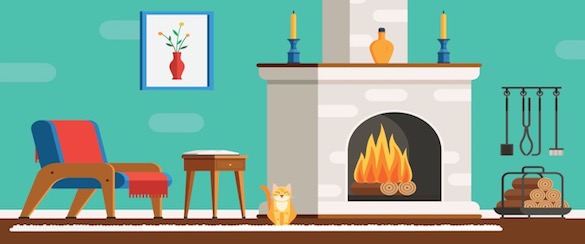Heating Your Home Safely
With days getting
shorter and temperatures getting cooler, it’s the time of year when many people
turn up the heat in their homes. It’s also the time of year when the
number of home fires goes up, which are often caused from using alternative
heating methods.
shorter and temperatures getting cooler, it’s the time of year when many people
turn up the heat in their homes. It’s also the time of year when the
number of home fires goes up, which are often caused from using alternative
heating methods.
HOME HEATING SAFETY
The Red Cross has steps you can follow to get your home ready for cooler
weather and remain safe:
weather and remain safe:
- Have furnaces, chimneys, fireplaces, wood and coal stoves inspected and cleaned before another winter of use.
- Test batteries in smoke and carbon monoxide detectors.
- Make sure flashlights are available throughout the house and that they
have fresh batteries. - Insulate your home by installing storm windows or covering the inside
of windows with plastic to keep cold air out. - Develop a fire escape plan and practice it with everyone who lives in
the home. - Prepare a disaster supply kit to
have ready when winter storms hit. The kit should include a three-day
supply of food and water per person, flashlight, battery-powered or
hand-crank radio and extra batteries. - Spread sand, rock salt or kitty
litter on walkways and steps to make them less slippery.
SPACE HEATERS
Nearly
half of the households in this country use alternative heating sources such as
space heaters, fireplaces, or wood/coal stoves to stay warm. Fixed and portable
space heaters, including wood stoves, are involved in 74 percent of
fire-related deaths.
half of the households in this country use alternative heating sources such as
space heaters, fireplaces, or wood/coal stoves to stay warm. Fixed and portable
space heaters, including wood stoves, are involved in 74 percent of
fire-related deaths.
The
Red Cross recommends you look for a model that shuts off automatically if the
heater falls over. Space heaters should be placed on a level, hard and
nonflammable surface in your home. Other safety tips include:
Red Cross recommends you look for a model that shuts off automatically if the
heater falls over. Space heaters should be placed on a level, hard and
nonflammable surface in your home. Other safety tips include:
- Keep
all potential sources of fuel like paper, clothing, bedding, curtains or rugs
at least three feet away from space heaters, stoves, or fireplaces. - Never leave portable
heaters and fireplaces unattended. Turn off space heaters
and make sure any embers in the fireplace are extinguished before going to bed
or leaving home. - Keep
children and pets away from space heaters.
For
more heating safety and winter storm tips, download the free Red Cross
Emergency App at redcross.org/apps.
more heating safety and winter storm tips, download the free Red Cross
Emergency App at redcross.org/apps.
HOME FIRE CAMPAIGN
Working
with fire departments and community groups across the country, the Red Cross is
installing smoke alarms in homes in neighborhoods at high risk for fires and
teaching residents about fire prevention and preparedness. The Red Cross is
calling on everyone to take two simple steps that can save lives: create and
practice their home fire escape plan and check their smoke alarms to be sure
they are working properly. To learn more
about the campaign and home fire safety, please visit redcross.org/homefires.
with fire departments and community groups across the country, the Red Cross is
installing smoke alarms in homes in neighborhoods at high risk for fires and
teaching residents about fire prevention and preparedness. The Red Cross is
calling on everyone to take two simple steps that can save lives: create and
practice their home fire escape plan and check their smoke alarms to be sure
they are working properly. To learn more
about the campaign and home fire safety, please visit redcross.org/homefires.

